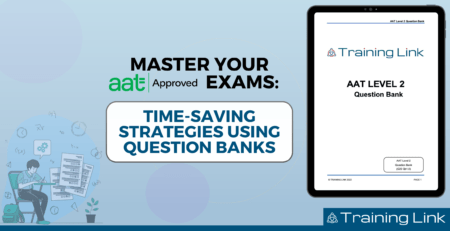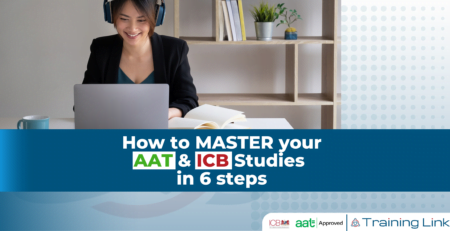How To Tackle The AAT Level 4 Synoptic
This article refers to the AQ2016 syllabus.
Stressed about the Synoptic? Don’t panic! Our tutor, Jennifer Nyland, reveals the tactics you need for AAT Level 4 synoptic success…
The AAT Level 4 Synoptic exam has a notoriously dismal pass rate. It currently sits at only 56.7%. But this is still a big improvement from its first release when only a paltry 41.2% managed to pass. Although it’s still very low, it is still superior to the dreaded MDCL exam, which is currently 52.5%.
This synoptic exam assesses the knowledge obtained in three mandatory assessments:
- Management Accounting: Budgeting
- Financial Statements for Limited Companies
- Management Accounting: Decision and Control
PDSY also requires you to demonstrate knowledge and understanding of the unit:
- Accounting Systems and Controls
Nationally, the number of students on their 4th and 5th attempts of both of these exams is a cause for concern.
Are the AAT Level 4 synoptic exams too difficult?
Many students pass this exam first time, so could the problem be down to preparation and readiness?
AAT claim that large numbers of students have not successfully completed the core units before taking this exam. And some rush to try to fit in with ‘synoptic windows’. This can have a dramatic impact on results. Preparation is key with all exams but, as with MDCL, this exam is tough because there is so much content to remember and it is also mostly written.
But help is at hand… here are some top tips to tackle this exam, which can help you secure a pass.
Top Tips To Tackle The Synoptic
By tackling the tasks in a different order you can manage your time in a more efficient way and deal with the ‘low hanging fruit’ early on before tackling the more challenging sections. Let’s take a look…
Synoptic Task 1 – worth 20 marks
It covers easy multiple-choice questions based on your knowledge from Level 2 & 3, e.g. control accounts reconciliations, ethics and learning outcomes 1 and 2 from the ASYC unit. You should spend a maximum of 15 mins on this Task.
Synoptic Task 5 – worth 20 marks
This task covers relatively easy ratio calculations (computer marked) and interpretation (computer or human marked), covered in FSLC. The interpretation part of this Task may be written or multiple choice. Look at the numbers. What has increased or decreased? What may have caused this? You should spend a maximum of 20 mins on this Task.
Can you see why this is important? This exam is 3 hours and worth 100 marks. So far, you could easily achieve 36-40% in the first 30 minutes of the exam, in only two tasks!
Synoptic Task 3 – worth 15 marks
This task is not quite as easy as the previous, but is still relatively straight forward. This task will require you to identify the weaknesses. Read the question first, then read the information provided so you know what weaknesses you are identifying. This will save time. No marks will be awarded for identifying weaknesses on, for example, the sales process/system when the question requires weakness in the payroll systems or risk of fraud or how the weaknesses may effect profit. Always refer to the scenario, use names and assume the examiner knows nothing. Use the marks available as a guide on how much to write. You should spend approximately 25 to 30 mins on this Task.
12-15 marks on this task is easily achievable, so you could gain 48-55% in just over the first hour of this exam.
Synoptic Task 6 – worth 15 marks
This question suitably follows on from Task 3. This question requires you to analyse the scenario and may require you to identify weaknesses and make recommendations. It could require you to explain or calculate a Cost Benefit analysis or produce a SWOT analysis. Some students have complained to AAT and were confused why they were given a blank table/grid in an answer box, this is for your workings of the Cost Benefit Analysis. Remember for SWOT: Strengths and Weaknesses are normally internal. Opportunities and Threats are normally external. You should spend approximately 30 to 40 mins on this Task.
At this stage of the exam we could have possibly achieved a further 12 -15 marks, meaning you could potentially achieve 60 – 70 marks in approximately 1 hour and 45 mins with two tasks left.
The final two tasks – Task 2 and 4, are those that students find the toughest. Complete the task you are more confident with first to gain maximum marks in the time remaining. You should spend approximately 35-40 mins each on these last two Tasks.
Synoptic Task 4 – worth 15 marks
This task covers decision making techniques covered in MDCL. These could include, for example, relevant costing, limiting factors, contribution, make or buy, outsourcing, standard costing, product discontinuance, shut down or target costing.
Synoptic Task 2 – worth 15 marks
This task covers budgeting and budgetary reports from MABU, costing techniques and standard costing from MDCL and maybe elements of ASYC. Remember to answer the question being asked. So many students lose marks for not answering what is being asked of them.
You should spend approximately 35-40 mins each on these last two Tasks.
Gain as many marks as you can, as early as possible- be efficient
You can see that by using this method, we have used the time efficiently from the start of the exam to gain as many marks as possible in the shortest amount of time because the performance and concentration of many students will start to deteriorate after 2 hours.
My final advice would be to always refer to the information in scenario, use names, assume the examiner knows nothing and remember to include enough detail to gain the full marks available.
Good luck!
A version of this article was originally contributed to PQ Magazine











